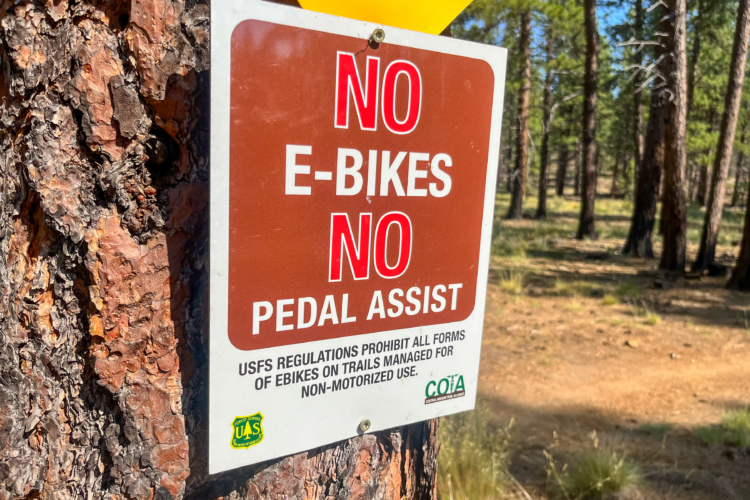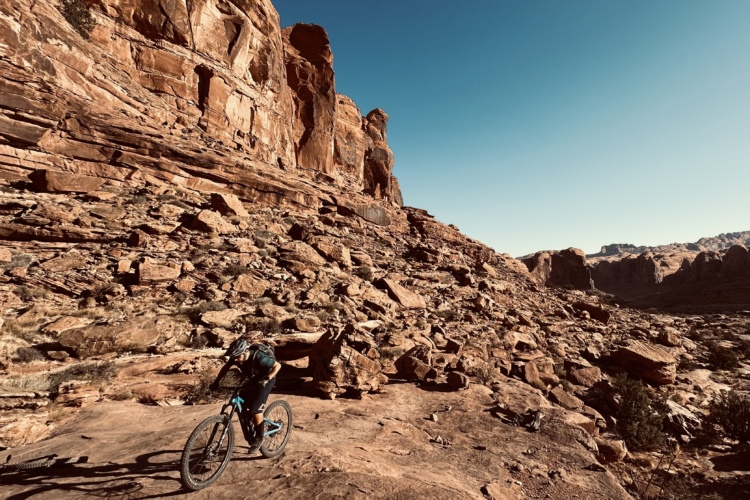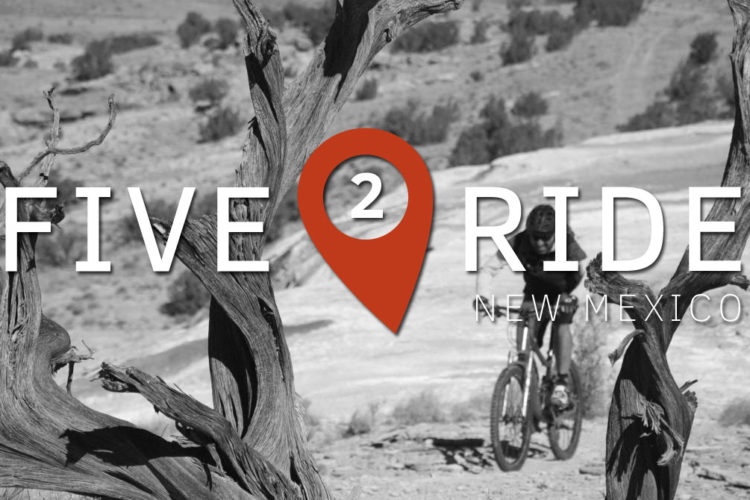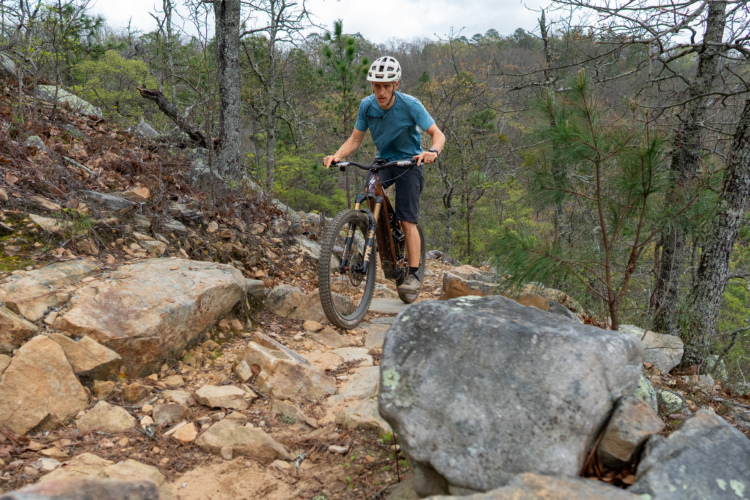
Legal trail access for e-bikes is a mess nationwide, with no uniform laws governing e-bikes. We’re currently seeing many individual BLM and USFS districts address the issue, but this is a patchwork approach initiated by the individual districts. Unfortunately, it appears that New Mexico is a bit behind the curve when it comes to addressing the issue of e-bike legality, and overlapping jurisdictional issues are causing problems — especially in Albuquerque (ABQ), the state’s largest city.
“No e-bike” signs have recently been posted on many trails in ABQ, including the paved Bosque trail, which forms a recreation and transportation corridor through the heart of the city. The legal wrangling that has led up to this point is long and complex — so what follows is the short version.

A bill passed by the state of New Mexico has restricted e-bikes on dirt trails.
New Mexico’s problems began with a state law passed in November 2023, which was originally proposed to codify e-bike access on trails. However, the law ended up having the opposite effect for electric mountain bikes, banning them from natural surface trails.
“The state has essentially allowed e-bikes on all developed trails,” said Dean Carroll, a member at large for the Albuquerque Mountain Bike Association (AMBA), member of the International Mountain Bicycling Association (IMBA), and organizer of the New Mexico eBikes (NMEB) group on Facebook. “Developed trails are defined as either having Crusher fine or paved trails. A regular earthen trail in the state of New Mexico is not open to e-bikes.”
While I’ve used the term “banned” here to be clear that e-bikes are, by default, not allowed on dirt trails on land owned by the state of New Mexico, Carroll prefers the term “restricted,” saying, “they haven’t totally banned them. They’ve restricted the trails that they can be used on. Again, an e-bike cannot be ridden on an undeveloped trail.” While to me, the distinction between “banned” and “restricted” is unclear in this context, the net-net result is that, by default, e-bikes cannot be ridden on state-owned land.
However, “the law is set so that local jurisdictions can change that if they want to,” said Martin. Santa Fe, the capital of New Mexico, quickly took advantage of the leeway included in the bill and enacted legislation to allow e-bikes. ABQ also began the process around the same time, but the municipality has struggled to codify e-bike access into law successfully.

Jurisdictional nightmares for ABQ, including an e-bike ban on a paved bike path.
The City worked to pass legislation to allow e-bikes on their trails, but in certain places, other management agencies with overlapping jurisdictions have subsequently closed trails to e-bikes. The Middle Rio Grande Conservancy District (MRGCD) recently passed a resolution banning all e-bikes on all of the trails in the Bosque and the Alameda Drain areas, which includes the paved Bosque trail, Crusher fine paths in the Bosque, and natural-surface singletrack trails. In addition, they’ve enacted a 20mph speed limit on all trails. This has caused serious consternation for cyclists in ABQ, as Patrick Martin, Advocacy Chair of Bike ABQ, told me.
The MRGCD is meeting on October 14th to reassess their position, and “ultimately, the stance we’re taking right now is […] they should just immediately amend it to allow e-bikes on those paved [Bosque] trails,” said Martin. “There’s really no reason e-bikes should be banned from the [paved Bosque Trail and Alameda Drain Trail]. I’m distinguishing that from the unpaved sections of the Bosque.”
While the nightmare on the paved Bosque trail is currently impacting the broader ABQ community, it isn’t technically a mountain bike trail. However, there are also singletrack trails located in the Bosque that parallel the paved path, but gaining e-bike access to these trails is a low priority for AMBA. Carroll thinks it’s unlikely e-bikers will ever get access to those trails again.
“I can tell you some of the more sensitive areas close to the Rio Grande probably will not be open just because of the sensitivity of them,” said Carroll. “They’re going to proactively close those trails that are close to the river… I don’t think we’ll ever get to ride those again.”
Update October 15, 2024:
At their meeting on October 14th, the MRGCD lifted their e-bike ban on areas with shared jurisdiction, “leaving MRGCD-only areas restricted until public comment,” according to Martin.
According to Carroll, this has effectively opened the paved Bosque Trail to e-bikes, and the MRGCD “will consider the crusher fine trails pending more input.”

Higher-priority mountain bike trails on ABQ Open Space lands have also been closed to e-bikes.
While singletrack in the Bosque is a consideration, the higher priority trails that Carroll and the AMBA are most concerned with are located on other City of Albuquerque Open Space lands.
The Sandia Foothills trails are the most popular singletrack trails close to the City of ABQ. These trails are split into two different trail systems: North and South, with the North also called the “Elena Gallegos Open Space.” Of the two, the South Foothills is the more popular trail network.
“In all of the Foothills, there are some trails open, but not as prolifically as we had hoped for, not as abundantly,” said Carroll. “We had anticipated many more trails to be open.”
“They’re giving more latitude [in the Northern foothills]. They’re opening up more freely because there’s no access to federal lands, and there’s not as much traffic back there.”
Across all of the lands discussed here, the City of ABQ has chosen not to open any trails to e-bikes that are contiguous with the Forest Service, as the USFS has not allowed e-bikes on any of their trails.
Carroll and the AMBA were surprised that several trail systems located east of the Sandia Mountains, known as the “East Mountain Trails,” would be affected. “The East Mountain Trails had us shocked because we didn’t see that coming into play at all, and we didn’t learn about it until the City enacted the law that was passed by the city council,” said Carroll.
The three affected trail systems in the East Mountains are San Antonio, Gutierrez Canyon, and Oak Flats. These East Mountain trail systems are currently completely closed to e-bikes, and aren’t utilizing a piecemeal approach like the trails in the Foothills.
“The city said the reason they closed East Mountain is because they haven’t had an opportunity to even evaluate it, so it’s easier for them to close it and reopen it than it would be to open it and then close it,” said Carroll. In addition, “the City told me that they’ve closed a lot of trails because they don’t want any conflict with the US Forest Service. So the trails on the east side of the mountain are contiguous with Forest Service land.”
Carroll refers to the City “closing” trails to e-bikes because, up until this point, the City had basically employed a “don’t ask, don’t tell” e-bike policy. But the passage of the state bill forced the City to subsequently pass legislation to address the e-bike issue.

An “overly cautious” approach, but there’s still reason for optimism.
“The city has taken an overly cautious approach to this, so they’ve closed more trails than anyone wanted to, and I think more than they really had anticipated,” said Carroll. “Everybody is being overly cautious and aggressively closing trails in anticipation of — they’re waiting for one another to flinch,” he continued.
Even though this legal wrangling has gone on for almost a year already, Carroll expressed a hopeful attitude about e-bike access in ABQ. “I think for the most part, everyone is feeling optimistic about the future… I want to feel it’s a short-term, short-lived direction.”
“Everyone seems to be receptive to revisiting all of it,” said Carroll. “Now, that doesn’t mean all the trails are going to be open, but I do feel very confident that additional trails will be opened.”
Regarding the paved Bosque bike path, Martin is quite confident that they’ll soon have legal access restored. “There really shouldn’t be much controversy over e-bikes being allowed on there. It’s a paved trail,” he said.
Carroll said that he’s also working with the MRGCD to help establish reasonable guidelines for e-bikes, and that the City “is even looking at developing trails specifically for e-bikes. So there is some attempt to expand what is currently open.”
Even though “no e-bike” signs may still be posted on many trails in ABQ, there’s hope for the future of e-bike access in the area. In the meantime, Carroll notes that the nearby BLM trail systems are e-bike friendly, so there are still plenty of places to ride… locals just might need to drive a little farther in the wintertime until the current City of ABQ Open Space bans are lifted.





















14 Comments
Oct 11, 2024
Oct 15, 2024
Keep them off all but bike parks and city trails.
Oct 17, 2024
Oct 10, 2024
Oct 12, 2024
Oct 14, 2024
Especially the inclusion part.
Oct 11, 2024
Oct 11, 2024
Oct 11, 2024
Oct 17, 2024
Oct 13, 2024
Oct 15, 2024
Shuttles - High-school mountain biking teams and now Ebikes are the absolute worst thing that could have ever happened to mountain biking.
Oct 17, 2024
Oct 16, 2024